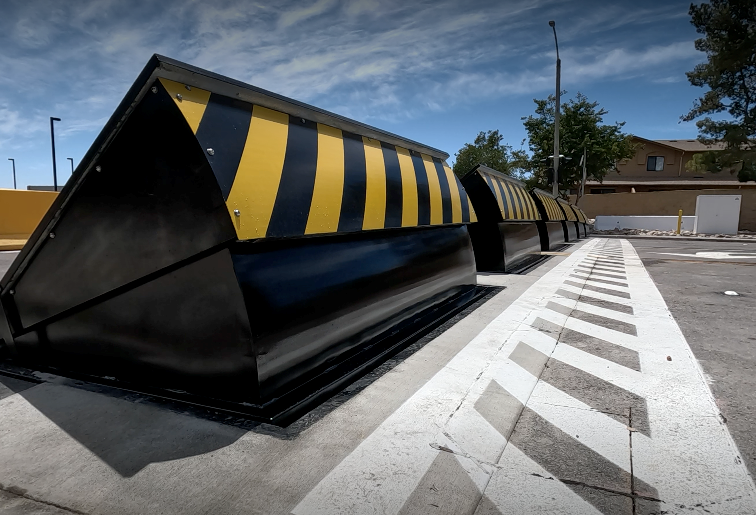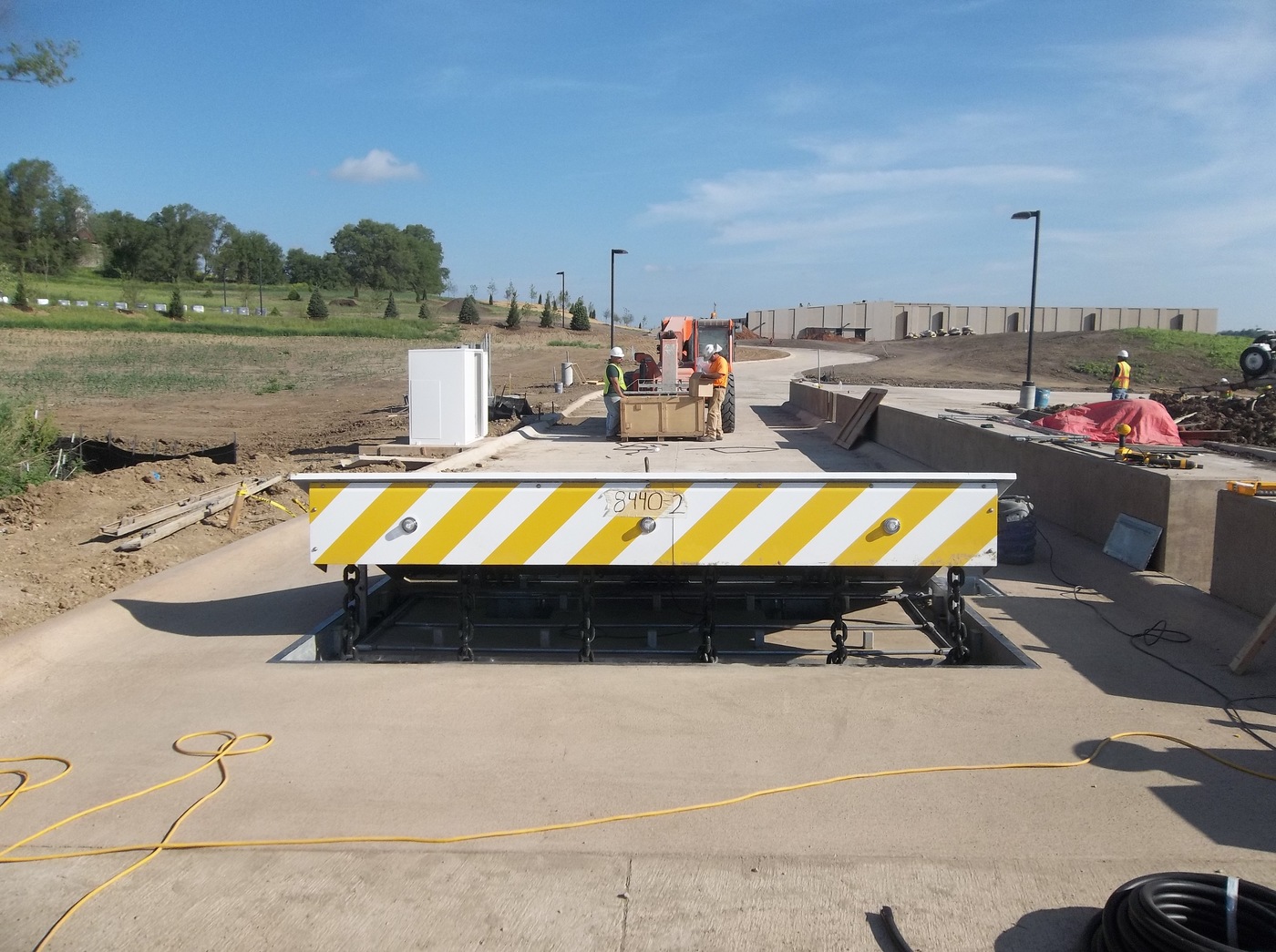8 Easy Facts About Wedge Barriers Described

Everything about Wedge Barriers
g., spring support 65 )may be taken care of to completion of the springtime pole 58 to allow compression of the springs 60. As the springs 60 are compressed in between the springtime sustains 62, the springtime setting up 54 generates a pressure acting on the webcam combined to the spring pole 58 in a direction 66. The continuing to be force used to
the cam webcam deploy release wedge plate 16 may be provided given an electromechanical actuator 84 or other actuator. Therefore, the spring assembly 54 and the actuator 84(e. g., electromechanical actuator)may run together to translate the camera and lift the wedge plate 16.
As mentioned over, the springtime setting up 54 applies a constant pressure on the web cam, while the electromechanical actuator might be managed to exert a variable force on the camera, therefore enabling the lifting and decreasing( i. e., deploying and retracting )of the wedge plate 16. In specific personifications, the constant force used by the springtime assembly 54 might be flexible. g., electromechanical actuator) is disabled. As will certainly be valued, the spring assembly 54 might be covered and shielded from debris or other components by a cover plate(e. g., cover plate 68 received FIG. 4) that may be substantially flush with the elevated surface area 38 of the foundation 14. As mentioned over, in the released placement, the wedge plate 16 offers to obstruct accessibility or travel past the barrier 10. For instance, the obstacle 10(e. g., the wedge plate 16 )may obstruct pedestrians or automobiles from accessing a residential or commercial property visit site or path. As discussed above, the obstacle 10 is connected to the support 30 secured within the foundation 14,

front brackets 71. As a result, the link assemblies 72 may pivot and turn to make it possible for the collapse and expansion of the linkage assemblies 72 during retraction and release of the bather 10. visit homepage The linkage assemblies 72 cause motion of the wedge plate 16 to be restricted. If a car is traveling towards the released wedge plate 16(e. For instance, in one situation, the safety and security legs 86 may be prolonged duringmaintenance of the barrier 10. When the security legs 86 are deployed, the security legs 86 sustain the weight of the wedge plate 16 versus the surface 12. Consequently, the lifting device 50 may be shut down, serviced, eliminated, replaced, and so forth. FIG. 5 is partial viewpoint sight of an embodiment of the surface-mounted wedge-style obstacle 10, highlighting the webcam 80 and the cam surface areas 82 of the lifting mechanism 50. Specifically, 2 cam surface areas 82, which are referred to as reduced camera surfaces 83, are placed listed below the webcam 80. The reduced web cam surface areas 83 may be fixed to the surface area 12 (e. As an example, the reduced web cam surface areas 83 and the mounting plate 85 may develop a solitary piece that is safeguarded to the anchor 30 by bolts or other mechanical bolts. Additionally, 2 cam surfaces 82, which are referred to as top cam surfaces 87, are positioned above the camera 80 and paired to (e. In other embodiments, intervening layers or plates may be placed in between the surface 12 and the lower camera surface areas 83 and/or the wedge plate 16 and the top cam surfaces 87 As discussed above, the web cam
80 converts along the web cam surface areas 82 when the wedge plate 16 is raised from the pulled back placement to the deployed setting. Additionally, as mentioned above, the spring assembly 54 (see FIG. 3 )might provide a pressure acting on the webcam 80 in web the instructions 102 using spring rod 58, which may minimize the pressure the electromechanical actuator 84 is required to apply to the web cam 80 in order to activate and lift the wedge plate 16. 1 )to the released placement(see FIG. 4). As shown, the web cam 80 includes track wheels 104(e. g., rollers), which contact and convert along the camera surfaces 82 throughout operation.